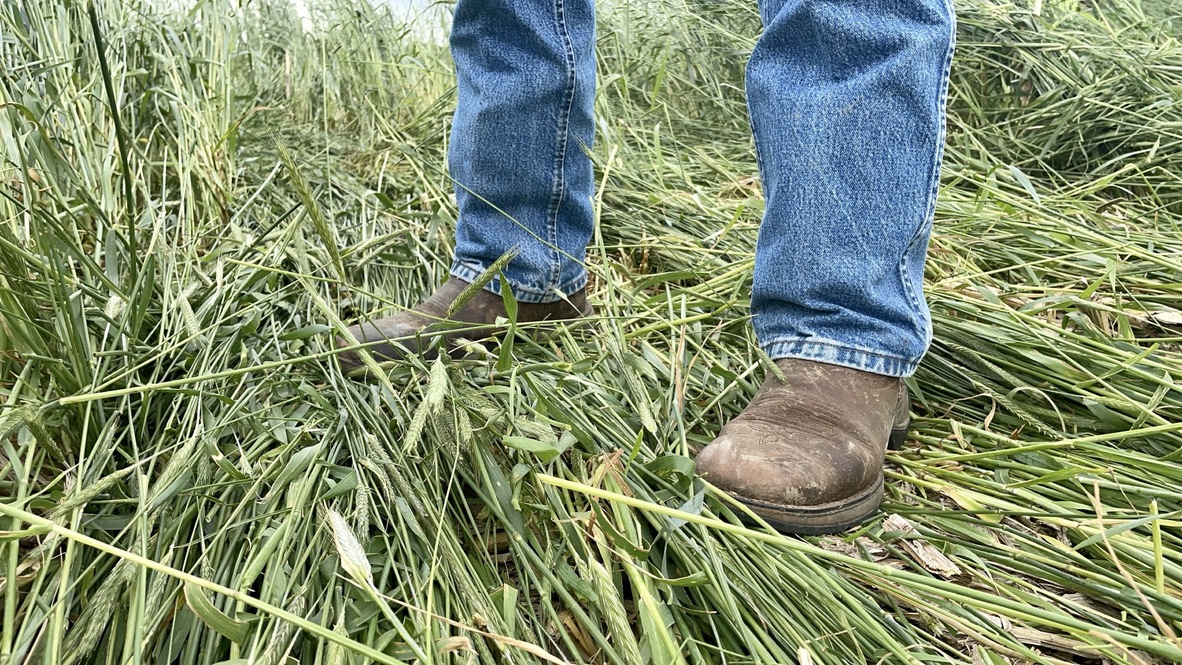
As we roll towards Labor Day and with harvest fast approaching, we start to receive many questions about what can be planted after the fall harvest of corn and beans. While the options are more limited than a summer planted mix, we are not without options.
Winter cereal rye
remains the undisputed king of cover crops due to its extreme cold tolerance and wide planting window. With the ability to germinate in soils as cold as 34 degrees, it can be planted very late in the season and still successfully vernalize. It is the first crop to break dormancy in the spring so it is the best weed control of anything you can plant in the fall. We like the Elbon variety for its shorter winter dormancy period and its smaller seed size which reduces your seeding rate. It is by far the best cover crop ahead of soybeans and it can be used ahead of corn as long as a good nitrogen management plan is in place. We have an excellent supply of Elbon cereal rye, but it is moving out fast so let us know if you are interested.
Winter triticale
is a cross between cereal rye and wheat. It has the cold hardiness and biomass-producing traits from the rye while having better forage qualities from the wheat parent. Triticale is the best winter cereal if maximizing spring forage is a priority – it can be chopped, baled or grazed very successfully all the way through the early head stage. It is a little longer season than cereal rye so you will not be able to plant your next crop quite as quickly if you are maximizing forage tons. We have excellent supplies of three of the best triticale varieties on the market right now so let us help you grow some forage!
Winter barley
is not as winter hardy as rye or triticale but is more winter hardy than oats. It is not as fast-growing or aggressive as rye, which makes it somewhat less effective for spring weed control, but this also makes it a better cereal ahead of corn as there are less nitrogen tie up effects. Barley is higher quality, but lower quantity forage than rye or triticale and our beardless varieties make for excellent fall and spring grazing. We have already sold out of our P919 barley and have limited supplies of the Valor winter barley left to sell, so contact us right away if you want to use winter barley in your fall mixes.
Winter oats
are one of the most palatable winter cereals that you can plant. We have an excellent supply of the Cosaque black oats this year. While not as winter hardy as the previously mentioned cereals, they will survive single digits and even subzero temps with some snow cover. Even if they do not survive the winter in more northern climates, they are a far better fall-planted option than spring oats which will winter kill in the low 20’s most years. Winter oats are one of the best forage cereals for the south (Zone 6A or higher) and they will pair very well with winter peas or vetch for outstanding spring forage options.
Annual Ryegrass
while not a cereal grain, is a viable fall-planted grass option nonetheless. This is a true grass with smaller, lighter and fluffier seed and lower seeding rates per acre. While the above-ground biomass of this species is far less than rye or triticale, the root system is massive. Annual ryegrass roots 36 inches deep have been observed from plants that are only 6 inches tall. Diploid varieties like Winterhawk can survive winters in zones 4B and 5A (Nebraska) and south but need to be established sooner than cereal rye to have the best survival chances. We like to see annual ryegrass established 2 weeks ahead of your first frost if possible to maximize root development prior to overwintering. Tetraploid types like TAM TBO will grow fast and produce more fall forage but are not as cold tolerant, so we like to use these further south.
Remember that as we move into the fall, we have fewer choices to select from, but we still have good options to get our ground covered for erosion prevention, improved infiltration, compaction breaking and supplemental winter and spring grazing. Give us a call or shoot us an email and let us help keep you covered.
